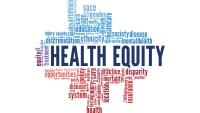On April 16, 2007, nurses at Montgomery Regional Hospital in Blacksburg, Virginia, a rural 146-bed facility, started their morning shift just like any other; by noon they had treated 14 gunshot wound patients. These were emergency department (ED) nurses who had recently completed a disaster-training course that helped them coordinate resources and understand their specific roles. ED nurses take continuing education courses, or they are provided with in-service training designed to address advances in the treatment of massive trauma to an individual; however, there are few or no requirements to educate the 3.1 – 3.6 million registered nurses on coping with the large-scale trauma in a community affected by a disaster. When disaster happens, all nurses, even those without mass casualty incident (MCI) education or training, may be called to participate.
The need for preparation
Practicing our nursing profession in cities that are in naturally predictable disaster-prone areas, such as the Midwest (tornados), the Gulf South (hurricanes), and most of California (earthquakes), puts us in a position of anticipating that at some point we will need to be prepared to confront a mass casualty event. If, as a professional, you find yourself in any of these areas or others where it is likely that a mass casualty scenario will occur, then it is incumbent upon you to be as prepared as possible. But how prepared were the medical personnel to confront the horrors that descended upon the peaceful towns of Littleton, Colorado, in April of 1999 or Blacksburg, Virginia, in April of 2007? According to Dr. Tener Veenema, the potential for catastrophic disasters is increasing in number and complexity in response to “global instability, economic decay, political upheaval and collapse of government structures, violence and civil conflicts, famine, and mass population displacements.” Naturally occurring disasters or deliberately caused infections, chemical spills, radiological releases, or other calamitous events are challenging the U.S. healthcare system regardless of the size or location of a city. Are you ready for a chemical, biological, radiological, nuclear, or explosive event that can produce a large number of casualties in a relatively short period of time and overwhelm your ability to function?
If not, you are not alone; Rose and Larrimore surveyed 291 healthcare staff on knowledge and awareness of chemical and biological terrorism. Findings included that 53% of the participants claimed a willingness to work during a terrorist event; however, only 23% answered knowledge questions correctly and indicated feeling confident to render such care. Rebmann and Mohr assessed bioterrorism knowledge among Missouri Nurses Association members. Findings included that most respondents (60%) received no bioterrorism education and the most commonly cited barrier to education was not knowing where to obtain training.
In response to disaster education concerns, the International Nursing Coalition for Mass Casualty Education (INCMCE) was established in March 2001 to facilitate development of educational policies and competencies related to the impact of mass casualty events on nursing practice, education, research, and regulation. In August 2003, the INCMCE published the Educational Competencies for Registered Nurses Responding to Mass Casualty Incidents.
Training benefits
Training in preparation for, recognition of, and response to MCIs will be beneficial to you, your family, your employer, and your community. Some of the ways that nurses have received training regarding MCIs include reading professional journal articles, participating in mock disaster drills, volunteering in community services, and actual nursing during an MCI.
State boards of nursing have asked nurses to register with the Emergency System for Advance Registration of Volunteer Health Professionals (ESAR-VHP), a federal program created to support states in establishing standardized volunteer registration programs for disasters. By registering through ESAR-VHP, volunteers’ identities, licenses, credentials, accreditations, and hospital privileges are all verified in advance, so that they can respond more quickly when disaster strikes.
At the time of license renewal, most nursing boards are prompting nurses to register and to designate preference for deployment (local, state, or out-of-state) and to allocate the distance from home that one is willing to be deployed. Additionally, during registration nurses are asked to indicate whether or not they would consider working under the auspices of the federal government in the event of a declared national emergency.
Readiness self-assessment
Your level of preparedness is a function of the training received and your life experiences. To determine your level of training received and life experiences regarding MCIs, complete the following self-assessment:
Training received and life experiences regarding mass casualty incidents
Using the findings for the responses to the individual items from a research study of baccalaureate nurse educators from a southern state, the researcher computed a mass casualty experience score. In establishing an initial scoring system and scale to calculate mass casualty experience, points were assigned to participant response categories in incremental amounts to represent the amount of training received and/or life experiences related to preparation for MCIs. This initial scoring system was validated through a review by a panel of five medical professionals who were experts in the field of MCIs and disaster planning. The final form of the system used for calculation of a mass casualty experience score is presented below:
Scoring System for Calculating Mass Casualty Experience Score
The lowest possible experience score was 0, and the highest possible experience score was 40. To aid in interpretation of the experience score, the researcher established a scale of interpretation as follows: 0 = Not experienced, 1-5 = Slightly experienced, 6-10 = Somewhat experienced, 11-15 = Moderately experienced, 16-20 = Highly experienced, and 21 or higher = Extremely experienced.
Take action
If your experience score is not 11 or higher (indicative of moderately experienced), you need to take action. You can obtain training by reading professional journal articles regarding MCIs, many of which offer continuing education units. Many courses are offered online through the Federal Emergency Management Agency or onsite at the Center for Domestic Preparedness, the United States Department of Homeland Security’s only federally chartered Weapons of Mass Destruction training center. Additionally, many community associations such as the American Red Cross offer free courses on disaster management and shelter operations.
If you have not participated in emergency response mock disaster drills at your place of employment, you can participate in community drills. Through your state nursing board, you can join the ESAR-VHP, which registers and verifies the credentials of volunteer health professionals in advance of an emergency or disaster. National registries, such as the RN Response Network, formed by the National Nurses Organizing Committee and the California Nurses Association, are additional options to volunteer services. One of the most resourceful methods of MCI training is through the military. Through experiential learning and personal experience in combat settings, military nurses develop situated knowledge needed for particular challenges faced when providing clinical care. Scenario-based, mass casualty–care focused, and repetitive training exercises have helped prepare enlisted nurses to learn designated roles, deliver organized care, and perform well with other team members.
Be proactive
If you could play a role in preventing deaths from a major catastrophe, such as a hurricane, earthquake, or terrorist event, would you? Are you prepared for this role? Research indicates that many nurses are not prepared to respond to MCIs. With the vast number of opportunities to acquire the necessary knowledge and training, that is not an acceptable situation. On an individual basis, nurses need to become more proactive by reading and participating in training exercises related to MCIs. Institutionally, where it is not already in place, mandatory education regarding mass casualty events needs to become part of the nurse’s professional in-house training. To receive real life experiences, consider involvement in community services and registering to assist in locally, statewide, nationally, or internationally declared emergencies.
Kristin Whitty is assistant professor at Southeastern Louisiana University School of Nursing in Baton Rouge. Michael F. Burnett is professor and director in the School of Human Resource Education & Workforce Development Department in Louisiana State University, Baton Rouge.
Selected references
American Association of Colleges of Nursing. Nursing fact sheet. http://www.aacn.nche.edu/media/FactSheets/nursfact.htm. Accessed March 13, 2012.
Conway-Welch C. Nurses and mass casualty management: filling an educational gap. Pol Polit Nurs Pract. 2002;3:289-293.
De Jong M, Benner R, Benner P, et al. Mass casualty care in an expeditionary environment: developing local knowledge and expertise in context. J Trauma Nurs. 2010;17(1):45-58.
Gebbie K, Qureshi K. Emergency and disaster preparedness: core competencies for nurses. Am J Nurs. 2002;102(1):46-51.M
Hill M. Rural ED nurses treat 14 gunshot victims in one day: teamwork is key. ED Nursing. 2007;10(8):85-87.
International Nursing Coalition for Mass Casualty Education Competency Committee. Educational competencies for registered nurses responding to mass casualty incidents. July 2003. http://www.nursing.vanderbilt.edu/incmce/competencies.html. Accessed March 13, 2012.
Langan J, James D. Preparing Nurses for Disaster Management. Upper Saddle River, NJ: Pearson Prentice Hall; 2005.
Rebmann T, Mohr L. Bioterrorism knowledge and educational participation of nurses in Missouri. J Contin Educ Nurs. 2010;41:67-76.
Rose M, Larrimore K. Knowledge and awareness concerning chemical and biological terrorism: continuing education implications. J Contin Educ. 2002;33:253-258.
U.S. Department of Health and Human Services. The emergency system for advance registration of volunteer health professionals. http://www.phe.gov/esarvhp/pages/about.aspx. Accessed March 13, 2012.
Veenema T. Disaster Nursing and Emergency Preparedness for Chemical, Biological, and Radiological Terrorism and Other Hazards. New York, NY: Springer; 2003.
Whitty K. Factors influencing the importance of incorporating competencies regarding mass casualty incidents into baccalaureate-degree nursing programs as perceived by currently employed faculty [dissertation research oral presentation]. 2003. Retrieved from CINAHL Plus with FULL Text database.

















